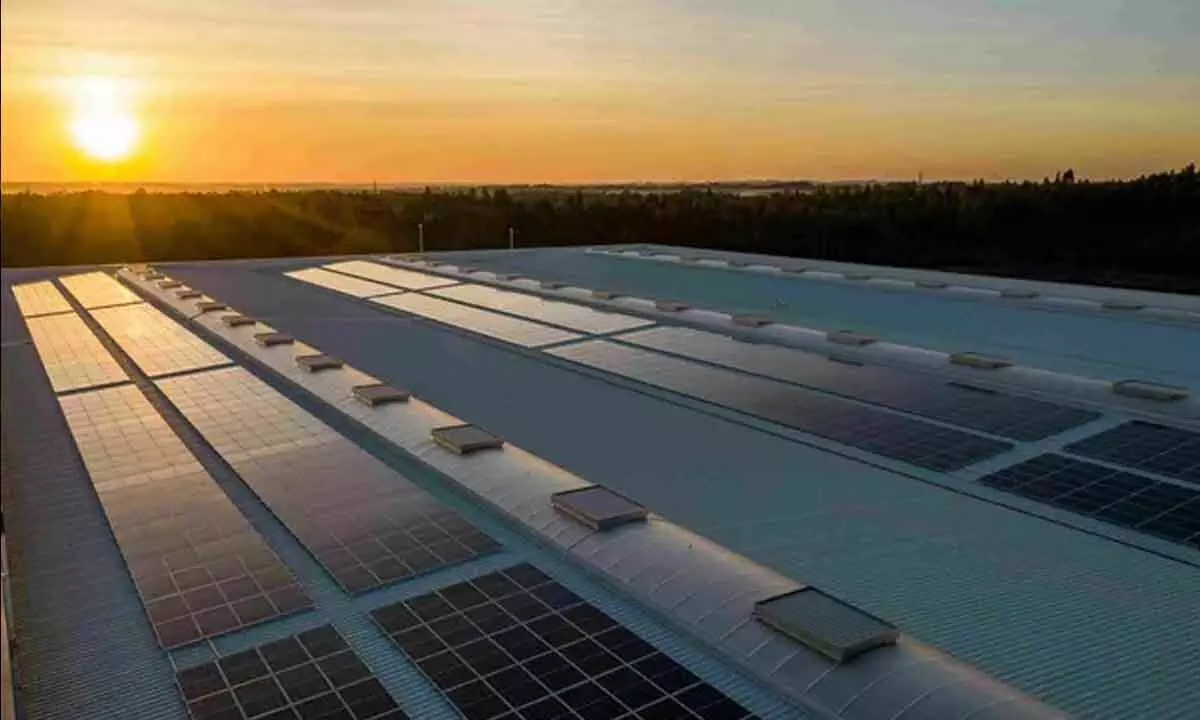Carrying forward existing policies pivotal for growth of solar power
image for illustrative purpose

The rooftop solar segment in India seems well positioned to bounce back this year, the slow-start notwithstanding. Whoever comes to power at the Centre will have to ensure that the government's residential rooftop programme, with attractive incentives, gets executed properly in order to ensure that the rooftop solar segment bounces back. Interestingly, India added rooftop solar capacity totalling 367 megawatts (MW) in the first quarter (Q1) of the calendar year (CY) 2024. It should be noted that installations fell nearly 10 per cent quarter-over-quarter (QoQ) from 406 MW and dropped over 24 per cent year-over-year (YoY) from 485 MW, going by Mercom India's newly released India Rooftop Solar Market Report-Q1, 2024. The country had a cumulative installed rooftop solar capacity of 10.8 gigawatts (GW). Sector analysts opine that although rooftop solar is off to a slow start, 2024 could be a breakout year if the government's residential rooftop program - with attractive incentives - finally takes off. Rapidly declining system costs and high power tariffs have created perfect conditions for the sector.
However, the challenge is on the supply side; a short supply of inverters and certain components, skilled labour and concerns over the ability of installers and government agencies to handle the rush is keeping the sector up at night. The drop in installations can largely be attributed to application processing delays faced by residential customers due to oversubscription under the ‘PM-Surya Ghar: Muft bijli yojana’ programme, a central subsidy for rooftop systems between one and three kilowatt. The rise in module prices to comply with domestic content requirements (DCR) further contributed to reduced capacity additions under the SURYA Gujarat programme. Installations under the capital expenditure (CAPEX) financing model accounted for 69 per cent of the capacity additions in the quarter. Capacity additions under the operational expenditure or the renewable energy service company (OPEX/RESCO) model accounted for the balance.
The industrial segment led quarterly capacity additions, comprising almost 57 per cent of installations. Commercial, residential and government segments accounted for around 28 per cent, 14 per cent, and 1.1 per cent of capacity additions, respectively. The top 10 states comprised over 77 per cent of cumulative rooftop solar installations as of March 2024. Gujarat, Maharashtra, Rajasthan, Kerala, and Karnataka continued to be the leading states for cumulative installed rooftop solar capacity during the quarter. In Q1 2024, issued rooftop solar tenders totaled 817 MW, up 48 per cent from 553 MW in Q4 2023 and a 141 per cent jump from 338 MW in Q1 2023. Tenders issued for projects to be commissioned under OPEX/RESCO mode accounted for 60 per cent of the quarter's announcements. The average cost of rooftop solar systems fell for the sixth straight quarter and was down by more than six per cent QoQ and nearly 22 per cent YoY. For the time being, what the country’s solar sector is looking forward to is continuation of the existing policies and fulfillment of the promises, irrespective of who comes to power on June 4.

